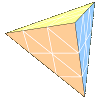Fair Trade is another predecessor to the contemporary social entrepreneurship field. Early attempts to commercialize fair trade goods in Northern markets were initiated in the 1940s and 1950s by religious groups and various politically oriented NGOs. Mennonite Central Committee (MCC) and SERRV International were the first, in 1946 and 1949 respectively, to develop fair trade supply chains in developing countries.1 The products, almost exclusively handicrafts, were mostly sold in retail outlet called "Worldshops." MCC's historic Worldshop, Ten Thousand Villages, is well-known today and has numerous locations throughout the US. Ten Thousand Villages operates as nonprofit subsidiary social enterprise of MCC.
The current fair trade movement was shaped in Europe in the 1960s. Fair trade during that period was often seen as a political gesture against neo-imperialism: radical student movements began targeting multinational corporations and concerns that traditional business models were fundamentally flawed started to emerge. The slogan at the time, "Trade not Aid", gained international recognition in 1968 when it was adopted by the United Nations Conference on Trade and Development to put the emphasis on the establishment of fair trade relations with the developing world.2 Nineteen sixty-five saw the creation of the first Alternative Trading Organization (ATO) and that same year, British Oxfam launched "Helping-by-Selling", a program which sold imported handicrafts in Oxfam stores in the UK and from mail-order catalogues.3 Worldshops for fair trade goods spread to the Netherlands in 1969 and expanding throughout Europe in the 1970s. In the early 1980s, to offset a decline market for handicrafts, Alternative Trading Organizations began broadening the scope of fair trade from handicrafts to include agricultural products, particularly commodities, whose spiraling prices had a dire impact on poor producers.
In 1988 Fair Trade labeling initiative was launched to promote fair trade commodities and agricultural products, followed by International Fair Trade Certification Mark in 2002. There are now Fair Trade Certification Marks on dozens of different products, based on Fairtrade Labeling Organization's (FLO) certification for coffee, tea, rice, bananas, mangoes, cocoa, cotton, sugar, honey, fruit juices, nuts, fresh fruit, quinoa, spices, wince and footballs. In 2005 these sales amounted to approximately €1.1 billion worldwide, a 37 % year-to-year increase.4 As per October 2006, 586 producer organizations in 58 developing countries were FLO-CERT Fairtrade certified and over 150 were International Fair Trade Associations were registered.5
